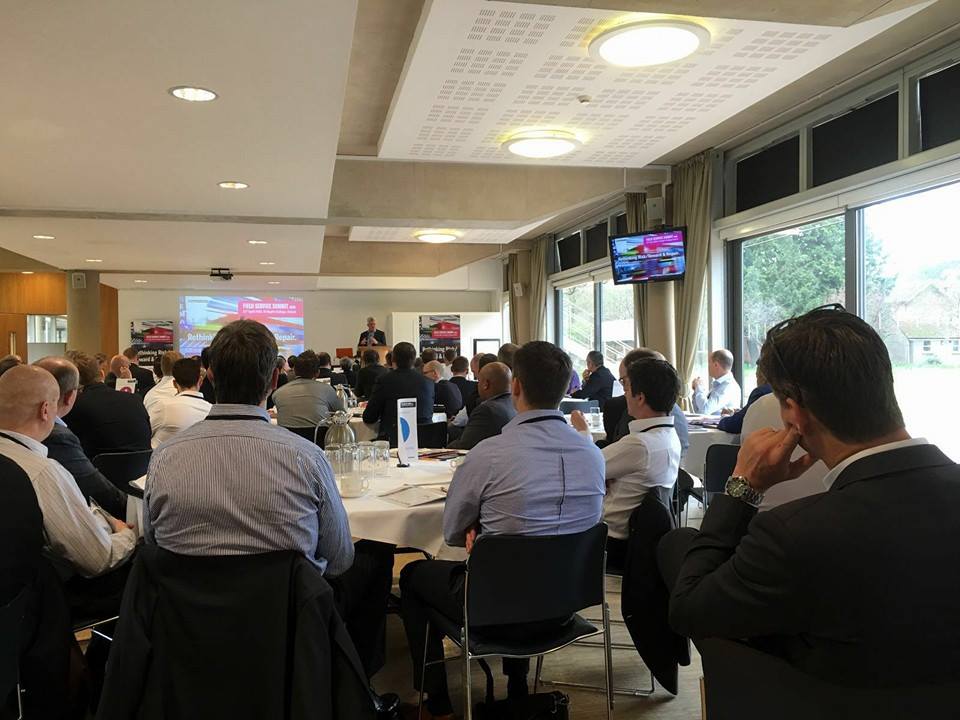SaaS & Agile Projects - the perfect combination for reduced cost & quicker implementations.
As one of the founders of Solarvista Software, a leading UK-based developer of field service management software, I’ve been involved in hundreds of...
A ready-made field service management system suitable for various workflows.
A 'No-code' Application Platform enabling custom applications or hybrid solutions.
Expertise to help accelerate your project and get the most from it.

There are so many factors to consider when choosing a field service system that fits your needs in the 21st century. Here's our list of the top 10 to consider:
This seems an obvious one and one that everyone is aware of, right? Well, not quite. Defining how any software works (and especially with field service software) is a difficult and abstract exercise and unless you work in IT as a professional (and even then, you are likely to find it hard), it’s an almost impossible to be truly 100% sure that the software will do what you need it to do.
Some mid-size and most larger businesses write “requests for proposal” documents that list each and requirement. These can help, but they can also hinder. Text is not always clear; how one person reads a phrase can be very different from another. We have seen scenarios where at least 50% of what the client thought they wanted, in reality they didn’t.
So how can this be handled?
Be realistic on scope. Firstly, by asking for “every feature that you can think of” not only elongates your decision, elongates the suppliers time to respond and it increases the overall price.
Be ruthless about “minimum viable product”. We help do this by challenging every request for a feature, even if it seems “obvious”. We want to reduce costs and an efficient way to do this is to ensure time is not spent providing software and services that don’t actually provide value.
Ensure the supplier can provide customisation. Sometimes, there are features you absolutely 100% need but forgot to ask. Yes, it happens. And quite often. If it does, you need a system that be customised. Here at Solarvista, we embed a 'no-code' application builder with our system so it can be modified easily, often without technical knowledge.
Over the last few years, the march of new smartphone devices has exploded and of course everyone has a position about “which platform is best”. In reality, they all have their pros and cons. Devices shouldn’t be the deciding factor. In my opinion, you should let people use the device they feel most comfortable with. Some might prefer iPhones, some might prefer Android etc., some Windows tablets etc. Here at Solarvista, we use cutting edge technology to produce identical mobile apps for all platforms and, critically, they are all functionally identical. Not in look and feel, but in function. So, one person can use iPhone, one can use Android, another can use Windows etc. It doesn’t matter, they are all accessible and usable.
Let’s face it, integration is the bugbear of any project. Over the years, different approaches have surfaced, each one meant to “make it easy” and, whilst there has been some success, it’s mostly, by its nature, hard to get right. It’s not so much the technology, as the process and its impact upon resulting products you may have. The most popular connections, simply transfer customer master data and/or billing information to accounts. It’s fair to say these functions are pretty much delivered today by standard components. Here at Solarvista, we use a common data connector that translates data into a common format and then translates the common format into the third-party system, e.g., Sage accounts. But we often find that integration reaches into many systems, both internal and external.
This sounds like it shouldn’t happen; after all, you spent a lot of time asking every stakeholder what they needed. But so often in this scenario, we see a good 10-20% of functionality is forgotten about and its need is only encountered “in project”. This causes significant scheduling, resources and budget issues. Where do you find the extra time or money to pay for such expansion of scope?
There is some good news; 10% to 25% of your suggested scope probably isn’t actually required after all. We often find this in most RFP driven projects. So there, is often potential for “horse trading” here. (See our posts about Agile-driven Projects; these avoid this problem!)
In selecting a product and vendor, you need to make sure that the future is catered for. You are buying a future, not just for today. Your business will change, and the software needs to change with it. There are a number of issues to clarify:
Does the vendor offer bespoke modifications? This isn’t always easy, especially on cloud-based solutions. Here at Solarvista, we use separate environments for enterprise customers that allow us to add custom software without affecting other accounts. And because our system includes an embedded 'no-code' application builder, processes can be changed easily.
Are these services financially affordable? Ask for an example of a typical bespoke modification.
One of the key reasons for choosing a new system may be that you want a more responsive system than the current older one. The performance of software is hard to predict, especially on systems and networks used for other purposes too, such as in-house servers and networks. To mitigate this risk, the best solution is the cloud. With cloud computing, you have virtually limitless CPU, database and network power at your disposal. In our case, we use Microsoft’s Azure platform and if a client needs more power, we literally, flick a switch; a task that might take only a few seconds to complete.
Let’s start by saying this isn’t a criticism. But it’s human nature (and proven dynamic) that products that are easy to use, get used the most. Field service management software falls into “complex ERP” and certainly some parts of all ERP software is complex. The users at greatest risk of this phenomenon are mobile users, such as field engineers & technicians. Keeping people engaged is a time-consuming task. This requires a regular process to review user problems and provide help and advice. Here at Solarvista, we help by offering unlimited training for all our cloud-based subscribers, but it really does need an internal push mechanism too.
Any ERP solution will generate vast quantities of data. Getting real insight from all this data is, again, a tricky task. We see so many systems procured where the business intelligence (“BI”) is assumed to be something done AFTER the system is implemented. We suggest these are done (or at least defined) at the START. This enables implementation to be carried out with the final outputs in mind. Having said that, new technologies, such as Microsoft’s Power BI, enable good results to be achieved with a self-service approach, but often the connectivity and data models still need to be provided up front.
We’ve already mentioned several reasons why predicting the duration of an implementation can be difficult. But by avoiding many of these mistakes, the risk to timeline can be reduced or even eliminated. One good way we recommend making sure you meet timelines desired (and perhaps more importantly, budget!) is to use “Agile Project” styles for both procurement and implementation. Our experience with agile projects has proven remarkably successful. The concept behind agile projects is the same as agile software development i.e., you focus on what is most important at all times until you reach the desired time deadline. The benefit is that the most value is delivered for the least cost. Naturally, the duration has to be realistic, but there is no doubt that this method ensures maximum value at the same time as delivery of a working solution on-time.
We often see this referred to as “death by a thousand cuts”. It’s more common than many think. And almost impossible to see happening unless you look closely. Slowly, over time, your people lose contact with the software, function by function, process by process. New staff member starts and they read an out-of-date process guide or get trained by another member of staff that equally, got by learning second hand from others. In fact, this is primarily solved by you the customer, but software vendors can make this process easier by ensuring training is affordable and easy to access. Here at Solarvista, we solved this problem by providing free training as part of our SaaS solutions… for ever (well, the duration of the subscription to be precise).

As one of the founders of Solarvista Software, a leading UK-based developer of field service management software, I’ve been involved in hundreds of...

How to get the right engineer to the right customer... at the right time! This is a question that Field Service Managers ask us all the time and...

For the third year running, the Field Service Summit UK will bring together service leadership professionals to discuss the latest trends and the...